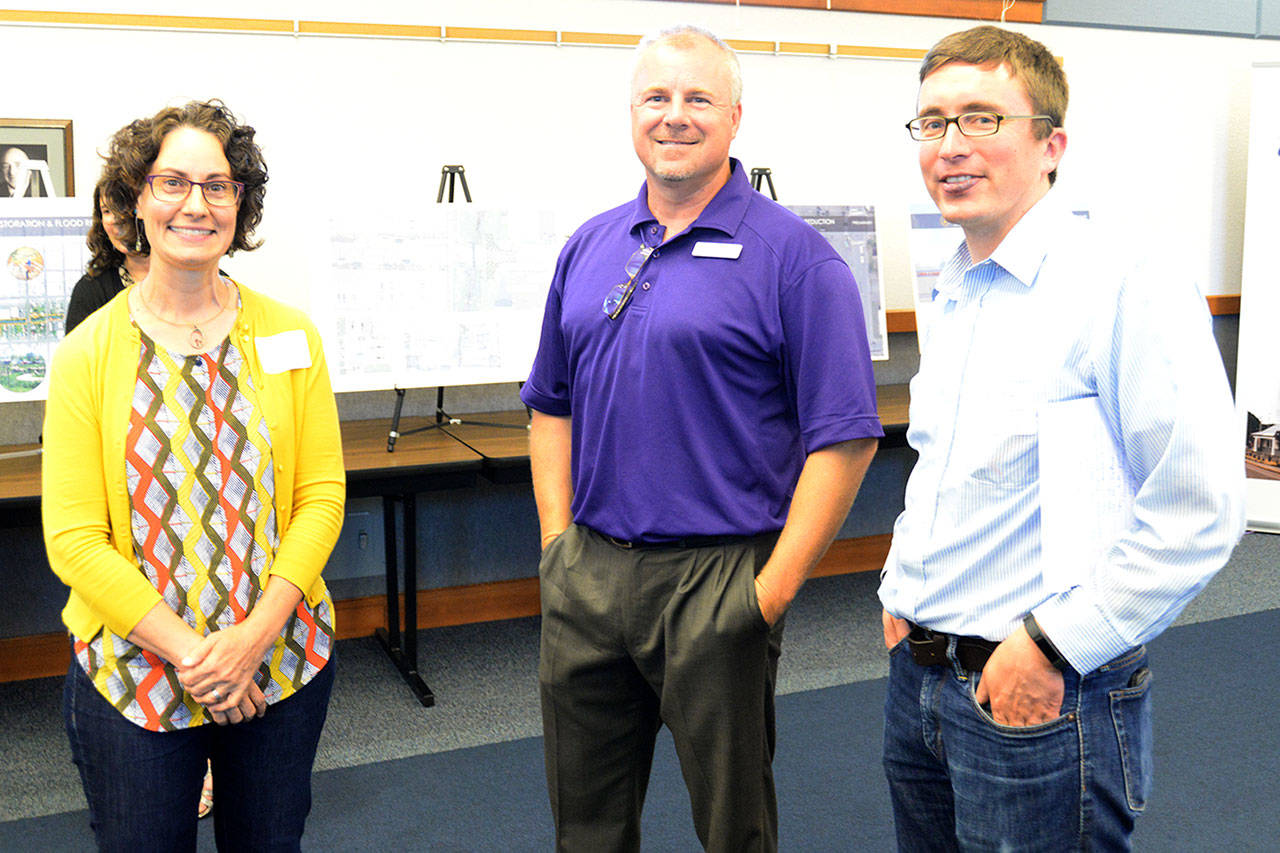An Aberdeen resident wheeled his mobility scooter through the PUD’s Dennis Nichols building Thursday evening, checking out the schematics of the TimberWorks flood mitigation plan for Aberdeen and Hoquiam. He paused at one in particular, which indicated a section of Cherry Street would be permanently closed for a “daylighting” of Fry Creek.
He turned to Aberdeen Public Works Engineer Kris Koski, then to project engineers Kathy Lombardi and Mark Steepy, and told them that particular stretch of Cherry Street was on his own personal tsunami evacuation route, and the permanent closure would also interfere with his frequent trips to see his doctor.
“That’s why we have these,” said Koski of the open house. Public comment weighs more heavily in major renovation plans such as the TimberWorks project than many would think. “Nothing is set in stone,” Koski said.
The Timberworks overall plan calls for construction of a dike and a number of different ways for channeling flood water away from residential and commercial neighborhoods. Thursday night’s open house was a chance to show the public some of the possibilities and get feedback.
Among the possibilities, is a plan calling for the Fry Creek culvert at Cherry Street between the Grays Harbor PUD building and the Hoquiam licensing agency to be removed and for Cherry Street to end there. This is what engineers call “daylighting,” removing culverts and roads to restore the creek to its natural state.
After hearing comments, Koski said two of the daylighting areas, including Cherry Street and Simpson Avenue at Aberdeen Avenue, would likely be reconsidered. Potentially, the permanent street closures could be replaced by a larger culvert, or some other alternative that could allow for both major roads to remain open.
Steepy is an engineer for KPFF in Lacey and is the lead for the design and construction of the infrastructure that will support the flood mitigation plan. Lombardi, a senior engineer with Maul Foster Alongi, is in charge of designing the environmental facets of the project.
“This is the fun kind of project,” said Steepy. “We get to see the environment return to a state it hasn’t seen in a hundred years.”
One part of the plan calls for a pumphouse at the railroad tracks west of Oak Street in Aberdeen near the Bi Mart, which would include a large water storage area. When the tide rises and the floodgate closes, water would first be diverted to the storage area. Currently, said Koski, the pump engages when the flood gate closes. The proposed plan would only have the pump running when the storage area is full, meaning a smaller pump would do the job. Also, said Steepy, it would allow for saltwater to enter Fry Creek as it did before the old pump and gate were installed, which would allow for saltwater fish to use it as they did a century ago. Also, said Koski, the less frequent pump time of the proposed station would “kill less fish.”
Guests at the open house were encouraged to fill out comment forms that will be considered by project engineers. “We can get insight from the public about issues we may not have considered” when planning a project of this scale, said Koski.
The plan is still under FEMA review and is not complete. Funding is hung up due to the legislature’s inability to pass a capital budget, but the mayors of Hoquiam and Aberdeen — Jasmine Dickhoff and Erik Larson, who were among the officials at the open house — both say flood mitigation is the biggest priority for both cities and other funding options will be sought out.


